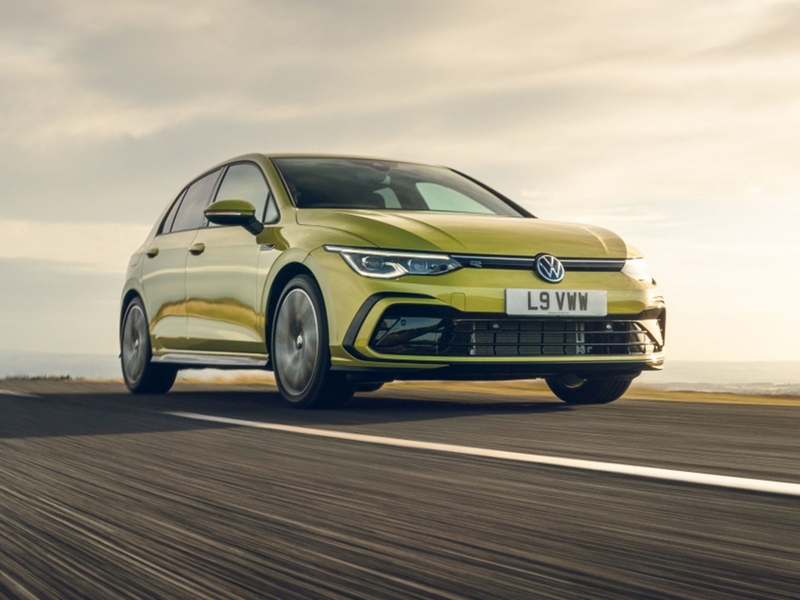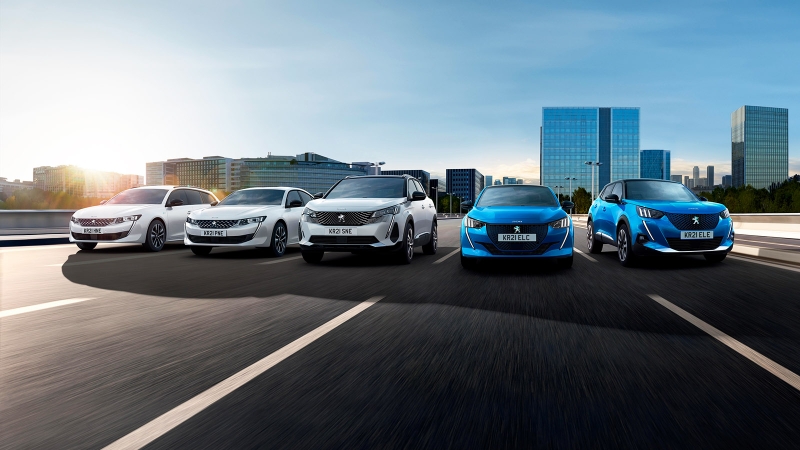
Peugeot 308 engines, driving and performance
Gallery
How does the Peugeot 308 drive?
Initially the Peugeot 308 feels like it’ll be fun and sporty, as it has a small steering wheel that’s quick to respond and a sense of agility around town. The reality is that the 308 is nice to drive but not as fun as the SEAT Leon, Mazda 3 or Ford Focus. The 308 achieves a more rounded driving experience, with next-to-no body roll and a confident approach.
Refinement is given at least equal billing to sportiness, which is a good thing. You could drive the 308 for hours on end and come out feeling refreshed.
We found the automatic gearbox to be a little bit hesitant when pulling away from a junction – not ideal considering every 308 shifts its own gears now. The new ‘self-charging’ hybrid engine has a six-speed auto – everything else has an eight-speed auto.
Is the Peugeot 308 comfortable?
Comfort has been seriously considered, which is what you’d hope for in a family hatch. At low speeds, the 308 takes care of the big bumps with aplomb, and deals with sustained smaller imperfections better than the Audi A3 and Vauxhall Astra.
Work your way up to motorway speeds and the 308’s comfort is even more impressive. We tested the car on a section of motorway with some annoying expansion joints, and the polished Peugeot made it feel like they weren’t even there.
With insulated windows, ambient high-speed noise is kept to a minimum too – you won’t hear too much from the wind, tyres or from passing traffic.
What’s the best engine to get?
Short of a hot performance model – when was the last time you saw a Peugeot 308 GTi? – the new 308 offers enough engine choices to keep you happy. Petrol, diesel, plug-in hybrid and fully electric models are available and, as of early 2024, a self-charging hybrid is too.
The 130hp 1.2-litre petrol and 1.5-litre diesel engines are carried over from the old 308. That’s no bad thing considering how zingy and economical the petrol engine is, and how affordable the petrol is compared to the battery-powered versions. You’ll crack 50mpg from the petrol on the right sort of journey.
We’d recommend the diesel engine to high-mileage drivers who can benefit from its near-60mpg fuel economy, but it’s the slowest engine in the lineup and will need regular long journeys to avoid potential DPF issues. You’ll need to factor in the occasional AdBlue top up, as well.
If you can put up with a slightly smaller boot and have the ability to recharge at home, the plug-in hybrids are our top recommendation. This is an example of how two power sources can be combined in a strong, effective way – the plug-in-hybrid engines offer the strong regenerative braking you get in an EV, which helps increase range, and the immediacy of the electric motor. The throttle, whether you’re on petrol or electric power, is really well tuned, and the whole package feels as futuristic as the car looks.
If you want to jump away from a petrol engine completely, there’s now an e-308. Boasting Peugeot’s newest electric powertrain, you get a 54kWh battery and a quoted 267-mile range, as well as decent acceleration. The e-308 manages to feel more expensive than its nearest rivals – the MG 4 and Volkswagen ID.3 – but, at the time of writing, it’s comfortably the most expensive choice in the 308 lineup.
Peugeot 308 performance
Decent but not earth-shattering performance is what you get in the 308, and that’s totally fine. Even the diesel – the slowest-accelerating 308 – is able to get up to speed and keep up with traffic without much fuss. Its 10.6-second 0-62mph time is sufficient and it has a slug of low-down torque to get you moving.
The entry-level petrol – likely to be the most common choice – gets to 62mph in a smidge under 10 seconds, so it’s neither fast nor slow. It’s almost exactly matched by the electric e-308, which is a little down on power compared to its nearest rivals and, consequently, doesn’t offer the lightning-fast acceleration we’ve become spoiled with in EVs. We expect it will feel slightly quicker off the line than the petrol, as all of its 156hp is available instantly.
Our pick of the range – the 180hp plug-in hybrid – is noticeably quicker, taking under eight seconds to hit 62mph from a standstill. There’s also a 225hp version of this engine but, despite having 25% more power, only reduces the 0-62mph time from 7.9 to 7.8 seconds – so we’d stick with the 180hp version as it’s probably going to be cheaper like-for-like.




















































